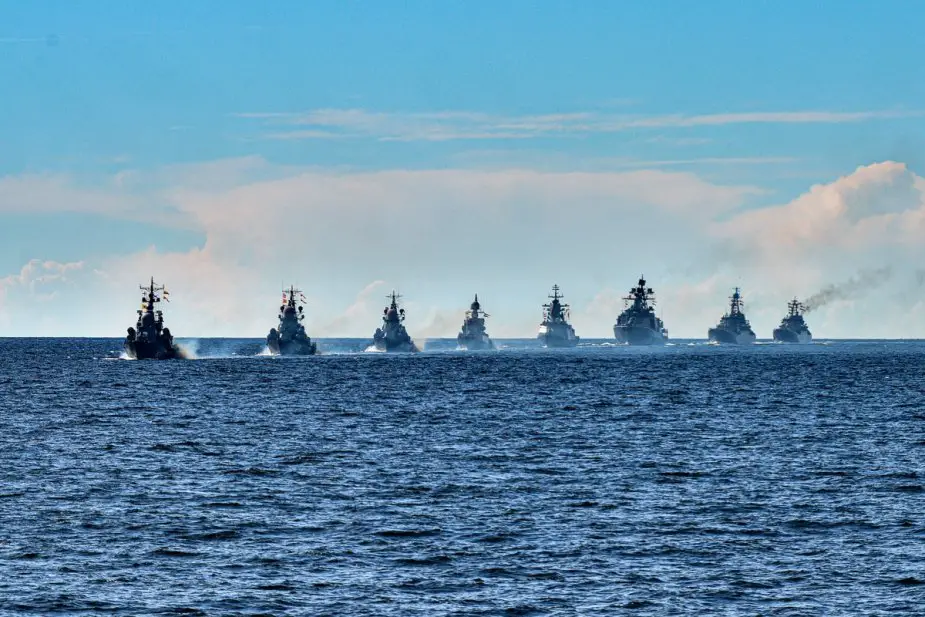Russia is building new-generation warships and submarines and upgrading old ships. Design of next-generation warships and submarines is beginning. The Defense Ministry and industry have sustainable perceptions of the development of major classes of warships and auxiliary vessels, the Independent Military Review writes.
Follow Navy Recognition on Google News at this link
 Analysis: Russian Navy to focus on precision weapons - take 2 (Picture source: © Vitaly Nevar/TASS)
Analysis: Russian Navy to focus on precision weapons - take 2 (Picture source: © Vitaly Nevar/TASS)
The Leader-class destroyer of project 23560 is being designed. Project 22350 frigates and project 20380, 20385 and 20386 corvettes are being built. They do not cede to the best foreign analogues. The green-water Leader is necessary as a multirole autonomous platform to carry numerous missiles and air and missile defense weapons. It gives the new warship broader capabilities in the implementation of the main and additional functions. Therefore, the creation of multirole destroyers is a vital guideline for the Russian Navy.
Besides frigates and corvettes, an ice-class patrol ship of project 23550 is being built for the Arctic. Corvettes with container weapons of project 22160 are serially built. Russian warships with Kalibr missiles have been successfully engaged and the range of the missiles was sufficient to reach Syria. The warships are built in major series.
Amphibious assault ships are built by three guidelines: big ships of project 11711 and their development, universal landing ships (two ships of project 23900 were laid on July 20, 2020), and upgraded speed landing means on the basis of small air-cushioned amphibious assault ships of projects 12322 and 12691.
The production of project 12700 minesweepers with composite hulls has been launched. Besides the sweeps, they have robotized search complexes. It is possible that the development and upgrade of mine search complexes can result in universal brown-water warships capable of effective anti-mine operations.
Minesweepers will develop to protect economic interests in brown waters, fight drug trafficking and engage in rescue operations. The main mission of the warships is to engage missile and artillery arms in the upper hemisphere and destroy mines by robotic complexes.
Nuclear submarine development guidelines include integration into the single information netcentric system, arming with robotic complexes and cruise missiles for strikes at coastal targets. The US Navy is creating Virginia-class nuclear submarines of Block 5 modification armed with Virginia Payload Module to fire a salvo of 40 Tomahawk missiles. In December 2019, a contract was signed for nine submarines of the class and an option to build the tenth one. The construction is likely to begin in 2025 and end in 2029 (nine subs) or 2030 (ten subs). The guidelines also include modular design, decreased life cycle costs, increased stealth characteristics, expanded capabilities to engage the means of special operations.
A perfect deployment system and a well-oiled life cycle management promote the engagement of submarines with a high control voltage factor which characterizes the effectiveness of weapons and demonstrates the ability of combat engagement.
Non-nuclear submarines need air-independent power plants, expanded range of weapons, and robotic complexes.
Surface warships have to integrate multirole radars, universal vertical launchers, complete or partial electric motion, upgraded architecture, anti-rolling devices to allow weapon engagement in force 6 sea, and weapons on new physical principles.
© Copyright 2020 TASS Navy Recognition. All rights reserved. This material may not be published, broadcast, rewritten or redistributed.



